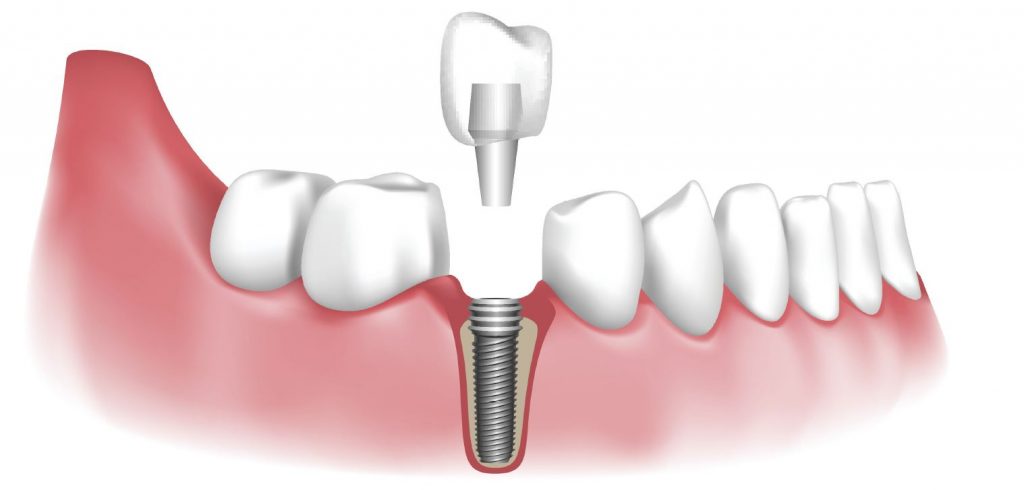A Patient’s Guide to Dental Implants
From the American Academy of Periodontology

A dental implant is an artificial tooth root placed into the jaw to hold a replacement tooth. Dental implants look and feel like natural teeth, and with proper care, they can be a long-term solution to tooth replacement.
Advantages of Dental Implants
Appearance: The replacement teeth that dental implants are built to hold will appear identical to your surrounding teeth. No one will know you have a replacement tooth.
Reliability: The success rates of dental implants are highly predictable. When placed by a periodontist and with diligent at-home maintenance, a dental implant can last for many years.
Confidence: Because they are secured into the jaw, dental implants function like natural teeth, allowing you to confidently smile, speak, and eat.
Comfort: Dental implants fuse into your jawbone, becoming permanent. Unlike dentures, they will stay comfortably in place and do not require messy adhesives.
Improved Oral Health: Because the adjacent teeth are not affected by dental implants, your long-term oral health is not compromised.
Dental Implant Treatment
Your periodontist, in collaboration with your general dentist, will develop a treatment plan unique to your specific needs. The dental implant, often a small titanium post, is first placed into the jawbone where the missing tooth is. Your jawbone will grow around the dental implant through a process called osseointegration. Once the jawbone has fused with the dental implant, an abutment, which attaches to the replacement tooth, will be placed. Typically, the replacement tooth is affixed by a general or restorative dentist. The entire dental implant process—including extraction, integration of the implant, and periods of healing—can take up to several months depending on your treatment plan.
Dental Implant Care
Because dental implants look and function like natural teeth, they require the same care. The American Academy of Periodontology (AAP) recommends brushing twice a day, flossing at least once a day, and receiving regular check-ups including an annual comprehensive periodontal evaluation.
A Patient’s Guide to Dental Implants
As specialists in treating gum tissue and the underlying bone in the mouth, periodontists are uniquely qualified to place and maintain dental implants. Periodontists receive three additional years of training after dental school to master the surgical skills needed to provide predictable and successful dental implant treatment.
The American Academy of Periodontology provides this information as a public service, and it should not be used as a substitute for the care and advice of your personal periodontist. There may be variations in treatment that your periodontist will recommend based on individual facts and circumstances. Visit perio.org for more information on periodontal disease.
